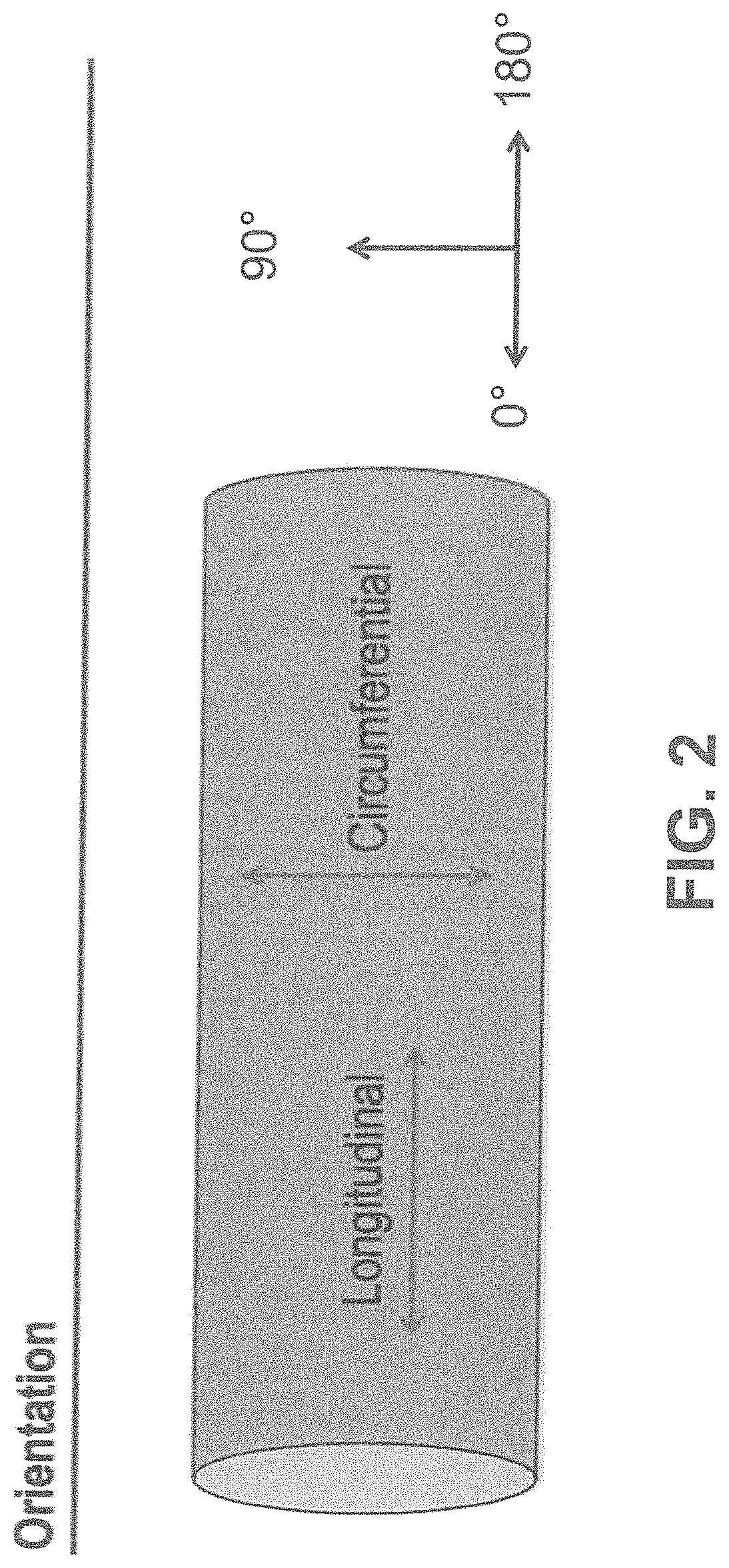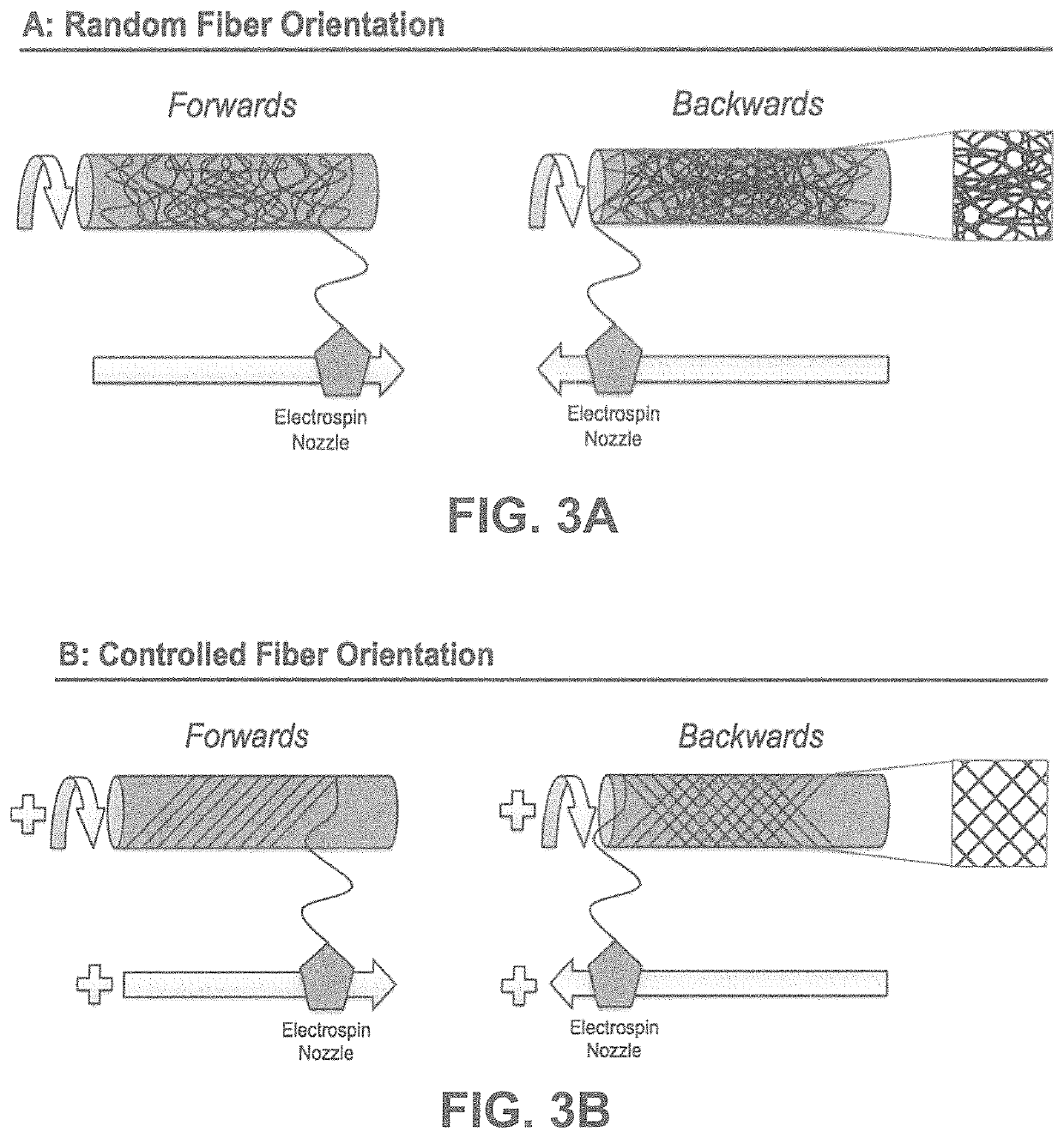Fibrous tubular conduit for stenting applications
a tubular conduit and fibrous technology, applied in the field of regenerative medicine, can solve the problems of brittle fracture of regenerative capacity grafts, the possibility of overcoming interconnections upon stretching, and the downside of brittle fracture of bioabsorbable polymers such as pla, so as to achieve minimally invasive treatment and not hamper somatic growth
- Summary
- Abstract
- Description
- Claims
- Application Information
AI Technical Summary
Benefits of technology
Problems solved by technology
Method used
Image
Examples
example 3
[0118]The effect of alcohol on the stretchability of PLA based fibrous tubular conduits was evaluated by uniaxial tensile testing at room temperature. Rings of 0.5 mm width were obtained from 20 mm electrospun PLA tubes after 1 hour spinning. Samples were immersed in pure water and in 25% solutions of the alcohol of interest and tested at a strain rate of 2.33 mm / s. Adding methanol resulted in an increase of elongation at break 2.5 times compared to pure water whereas ethanol represented an increase of 3.67 times and 1-propanol even prevented ring rupture (FIG. 10).
example 4
[0119]The effect of alcohol on the mechanical properties of PLA-based fibrous tubular conduits after alcohol depletion was investigated using uniaxial tensile testing at room temperature. Tests were performed on: i) dry electrospun rings, ii) rings immersed in pure water, iii) rings immersed in a 25% ethanol solution and iii) rings immersed in a 25% ethanol solution where after ethanol was depleted by multiple washing steps in water. This example shows that ethanol has an effect on the mechanical properties of PLA-based fibrous tubular conduits, which is to a certain extent reversible (FIG. 11). Testing dry PLA-based rings puts in evidence the advantage of the electrospinning technique for the stretchability. Compared to the elongation at break of bulk PLA, electrospun PLA presents an increase of two orders of magnitude. Forces decreased when samples were immersed in water and even presented a more considerable decrease when immersed in an ethanol solution. After depletion of ethano...
example 5
[0120]Strain rate plays an important role in the mechanical behavior of PLA-based scaffolds. Uniaxial tensile tests of PLA-based rings were repeated decreasing the stretching speed to 0.023 mm / s (FIG. 12). Lowering strain rates may allow the fibers to reorganize and relax improving the stretch capacity of the construct.
PUM
| Property | Measurement | Unit |
|---|---|---|
| diameter | aaaaa | aaaaa |
| contact angle | aaaaa | aaaaa |
| contact angle | aaaaa | aaaaa |
Abstract
Description
Claims
Application Information
 Login to View More
Login to View More - R&D
- Intellectual Property
- Life Sciences
- Materials
- Tech Scout
- Unparalleled Data Quality
- Higher Quality Content
- 60% Fewer Hallucinations
Browse by: Latest US Patents, China's latest patents, Technical Efficacy Thesaurus, Application Domain, Technology Topic, Popular Technical Reports.
© 2025 PatSnap. All rights reserved.Legal|Privacy policy|Modern Slavery Act Transparency Statement|Sitemap|About US| Contact US: help@patsnap.com



